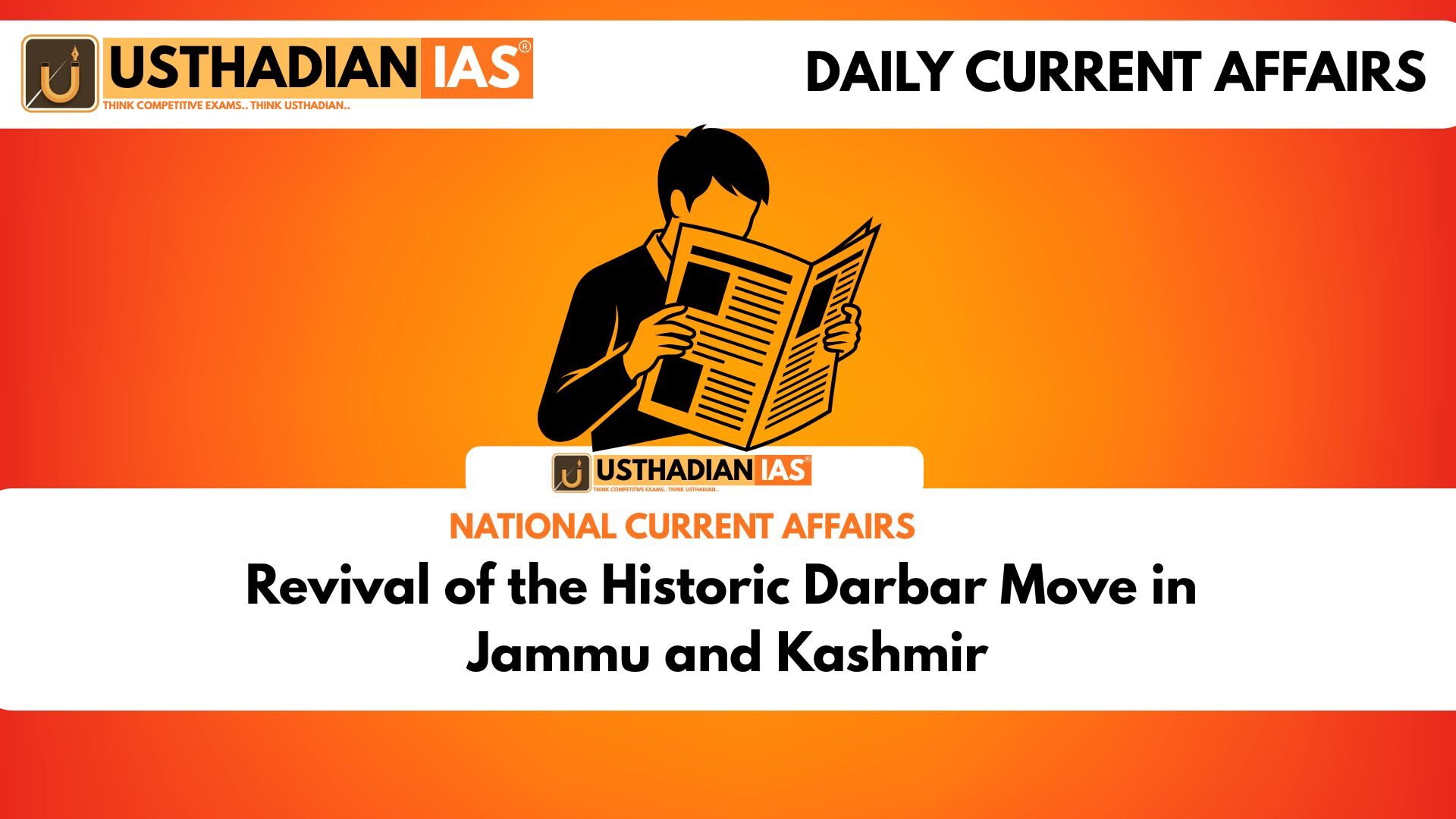Return of an Administrative Heritage
Revival of the Historic Darbar Move in Jammu and Kashmir: After a four-year gap, the 150-year-old Darbar Move tradition has been officially restored in Jammu and Kashmir, fulfilling a major government promise. Chief Minister Omar Abdullah announced the revival of this biannual practice, marking a significant step toward preserving the region’s cultural and administrative heritage.
Static GK fact: The Darbar Move originated in 1872, initiated by Maharaja Gulab Singh, the first Dogra ruler of Jammu and Kashmir.
What is the Darbar Move
The Darbar Move involves the biannual shifting of the Jammu and Kashmir government offices between Srinagar and Jammu according to the seasons. Srinagar functions as the summer capital, while Jammu serves as the winter capital.
This move ensured that administration remained accessible to citizens despite harsh winter conditions in the Kashmir Valley. Over the decades, it became a symbol of unity between the two regions.
Restoration After Four Years
The practice, suspended in 2021 due to cost-cutting and digital reforms, will resume in winter 2025. According to Commissioner Secretary M. Raju, all government offices in Srinagar will close on October 31, 2025, and reopen in Jammu on November 3, 2025.
During the winter session, the Civil Secretariat, Chief Minister’s Office, and 38 major departments—including Revenue, Forest, and Transport—will shift to Jammu, while 47 departments will function from temporary camps.
Static GK Tip: Jammu and Srinagar are located approximately 270 km apart, and the shifting process takes several days.
Why It Was Stopped Earlier
In 2021, the Darbar Move was halted to reduce annual expenditure, which had reached nearly ₹200 crore. The exercise required shifting thousands of employees and official files twice a year.
The Jammu and Kashmir High Court had also remarked that the practice had no legal or constitutional obligation, suggesting digital alternatives to improve governance efficiency.
Economic Implications for Jammu
The suspension of the Darbar Move in 2021 led to significant economic losses for Jammu’s local businesses. Hotel owners, traders, and transport operators faced reduced income during the winter months.
Organizations like the Jammu Chamber of Commerce and Industries (JCCI) had demanded its revival, arguing that the decision negatively affected livelihoods. The restoration now promises renewed economic vibrancy and seasonal employment opportunities.
Static GK fact: Jammu is known as the City of Temples and plays a vital role as a business hub for the Union Territory.
Symbol of Unity and Coexistence
The Darbar Move represents more than governance—it is a symbol of unity, balance, and coexistence between Jammu and the Kashmir Valley. The movement of government offices not only facilitates administration but also encourages cultural exchange and mutual understanding among the people of the two regions.
Its revival is thus seen as a reaffirmation of the shared identity of Jammu and Kashmir as one administrative and cultural entity.
Static Usthadian Current Affairs Table
Revival of the Historic Darbar Move in Jammu and Kashmir:
| Topic | Detail |
| Origin Year | 1872 |
| Founder of Tradition | Maharaja Gulab Singh |
| Summer Capital | Srinagar |
| Winter Capital | Jammu |
| Distance Between Capitals | 270 km |
| Annual Expense Before Suspension | ₹200 crore |
| Suspended Year | 2021 |
| Restored Year | 2025 |
| Key Departments Moving | Revenue, Forest, Transport, Technical Education |
| Chief Minister Announcing Restoration | Omar Abdullah |








